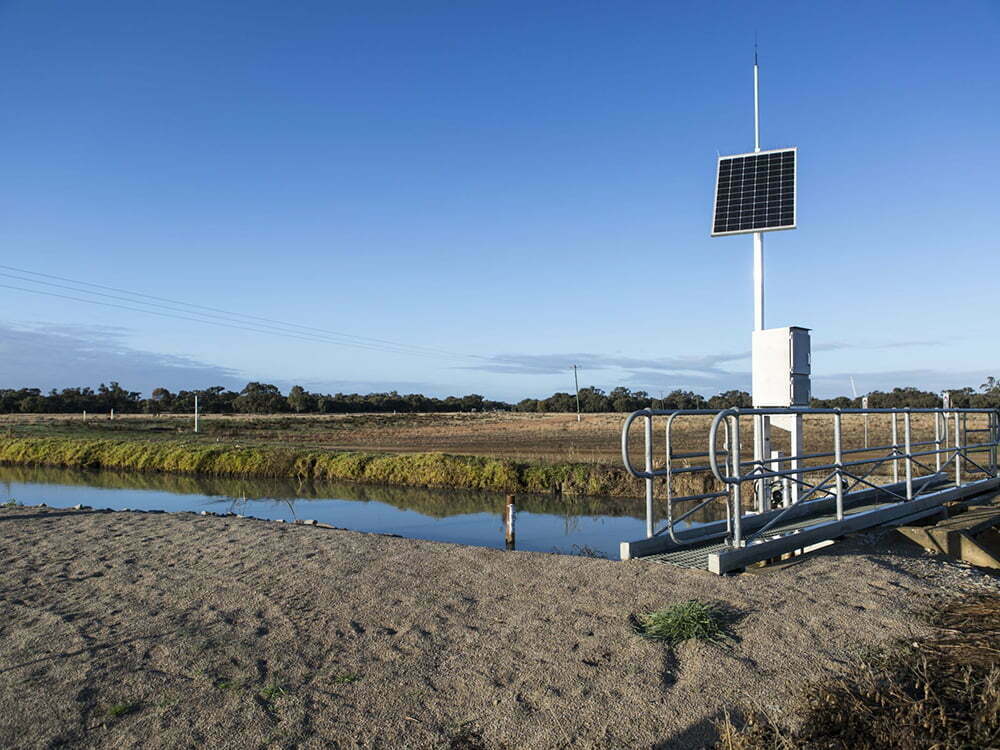Pillar 3 – On-Ground Interventions: Screening of Irrigation Offtakes
← Back to Pillar 3 – On-Ground Interventions

Quick tips:
- Demonstration reaches are well placed to undertake trail screening programs for water diversions.
- The program must be developed in consultation with all stakeholders especially irrigators.
- Recent work by Boys et al (2012) together with overseas literature should be used to develop design criteria for screens. Demonstration reaches provide the ideal opportunity to trial the preliminary designs used by Boys et al. (2012) on a longer-term basis.
- Incentives may be necessary to assist irrigators in overcoming the additional costs for screening.
There is a significant amount of evidence that large numbers of native fishes are being lost to rivers through water abstraction. The scale of the impact may differ from location to location and between seasons but given the volumes of water that are diverted from Australian rivers, fish entrainment is a significant issue. It encompassed a wide range of species and sizes from large bodied species to small bodied species as well as eggs and larvae of large bodied species. Overseas, particularly in North America, fish entrainment by water abstraction is taken very seriously and specific screening programs have been set up with regional guidelines. While Australian guidelines do not exist at present, recent work by Boys et al (2012) has shed some light on the likely screen designs for native fishes. The study was undertaken in the Namoi demonstration reach. Similar work in other demonstration reaches would help “spread the message” paving the way for a Basin wide fish screening program for water diversions. The following broad guidelines are based on the recommendations of Boys et al. (2012).
Consultation:
Consistent with all interventions in a demonstration reach it is essential to work with all stakeholders. In this instance irrigators and water user groups will be the key stakeholders.
Determine the extent of the problem:
The next step is to take an inventory of the numbers and types of diversions present in the demonstration reach. Although more work needs to be done at specific localities to determine the extent of fish loss through specific diversion sites, there is enough evidence to suggest a precautionary approach should be taken and the loss of fish should be assumed significant.
Determine solutions:
In the absence of Australian design criteria, Boys et al. (2012) suggest taking an evidence based approach to setting screen design and criteria for Australian species and vulnerable age classes. Their work suggests that approach velocities should not exceed 0.1m/sec and that perforated plate material is suitable for Australian species. They also point out that extensive development has already taken place in North America and this knowledge should be used.
Implementing a screening program:
It is essential to work with irrigators as screening of pumps to stop fish entrainment will cost money. Incentive funding may be required to assist them. It will also be necessary to factor in ongoing maintenance costs.
Monitoring:
The advantage of setting up a screening program in a demonstration reach is that rigorous monitoring will be undertaken and an adaptive management approach adopted. The program will contribute to the broad knowledge of screen designs to stop the loss of fish to water abstraction. Demonstration reaches have the opportunity to use the trial work and preliminary screen designs used at the Namoi demonstration reach and test them on a more permanent basis.
Baumgartner, L.J. and Boys, C. 2012. Reducing the perversion of diversion: Applying world standard fish screening practices to the Murray-Darling Basin. Ecological Management and Restoration,13,135-143.
Boys, C., Baumgartner, L., Rampuno, B., Robinson, W., Alexander, T., Roswell, M., Fowler, T. and Lowry, M. 2012. Development of fish screening criteria for water diversions in the Murray-Darling Basin. Fisheries Final Report Series No 134, NSW Department of Primary Industries, Cronulla.
King, A.J. and O’Connor, J.P. 2007. Native fish entrapment in irrigation systems: a step towards understanding the significance of the problem. Ecological Management and Restoration, 8,32-38.
Norris, A. 2012. Screening off-take pumps-Pilot program for the Dewfish Demonstration Reach. Queensland Department of Agriculture, Fisheries and Forestry, Brisbane.